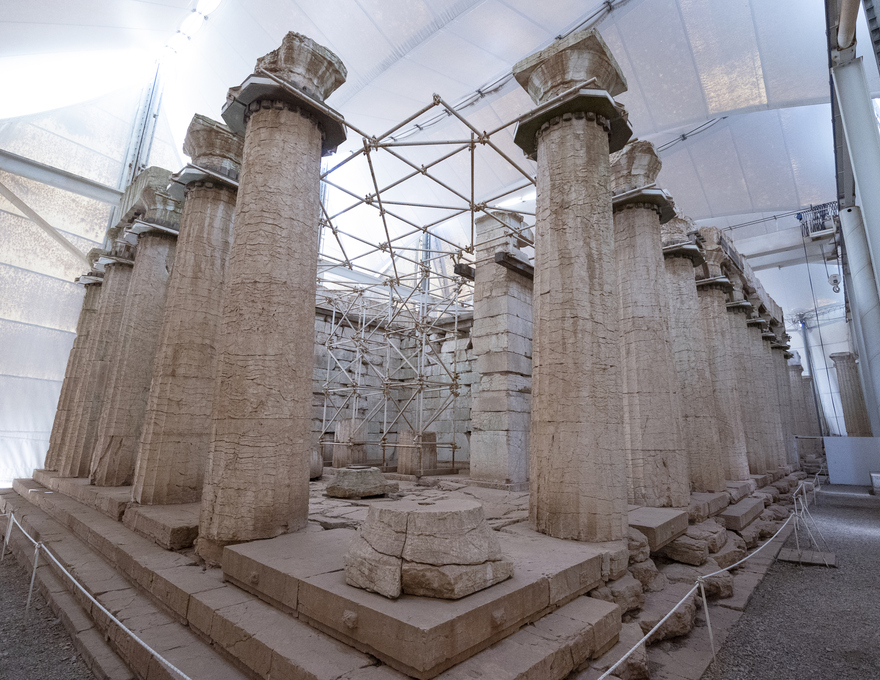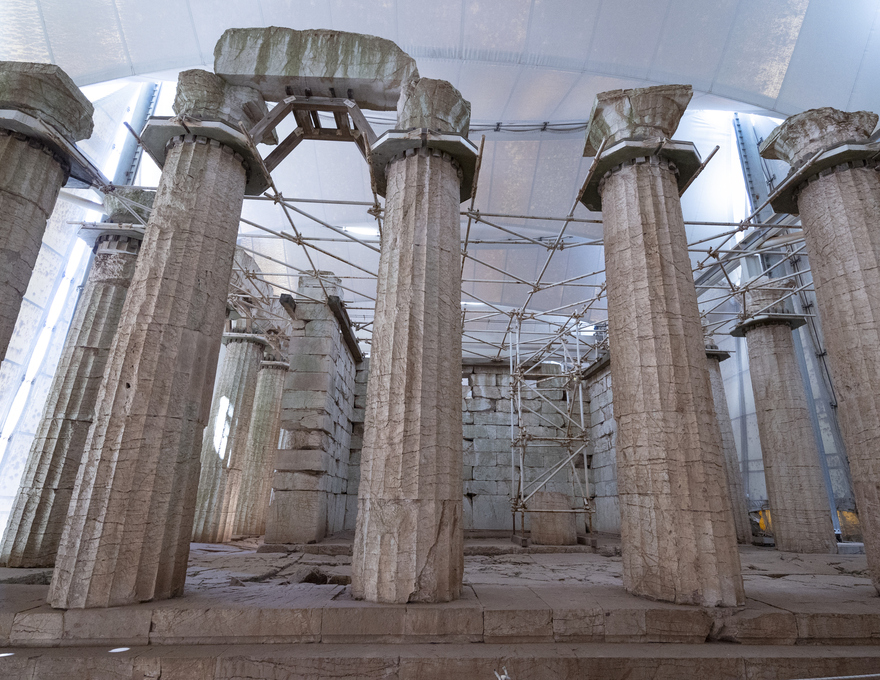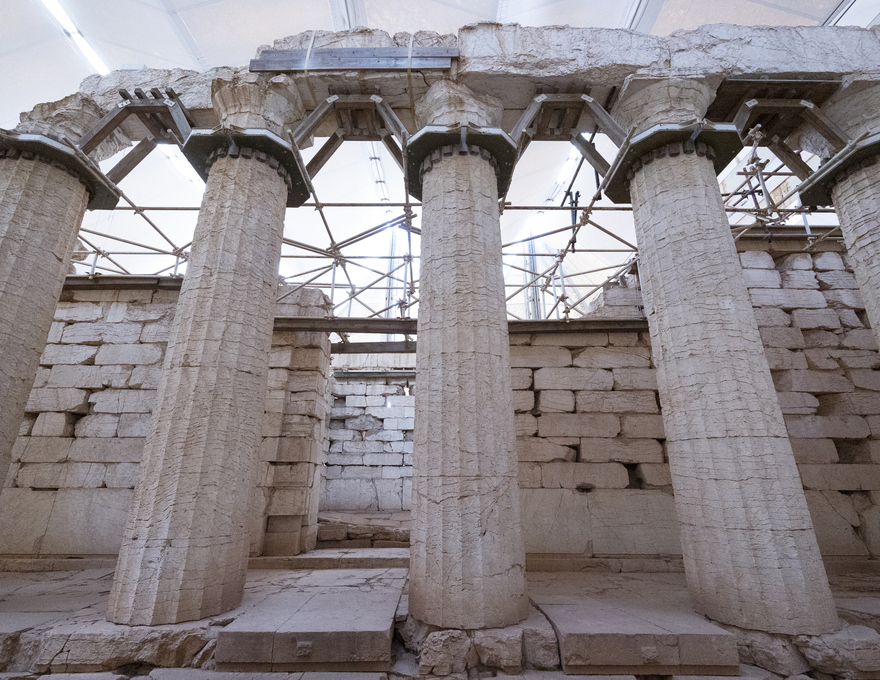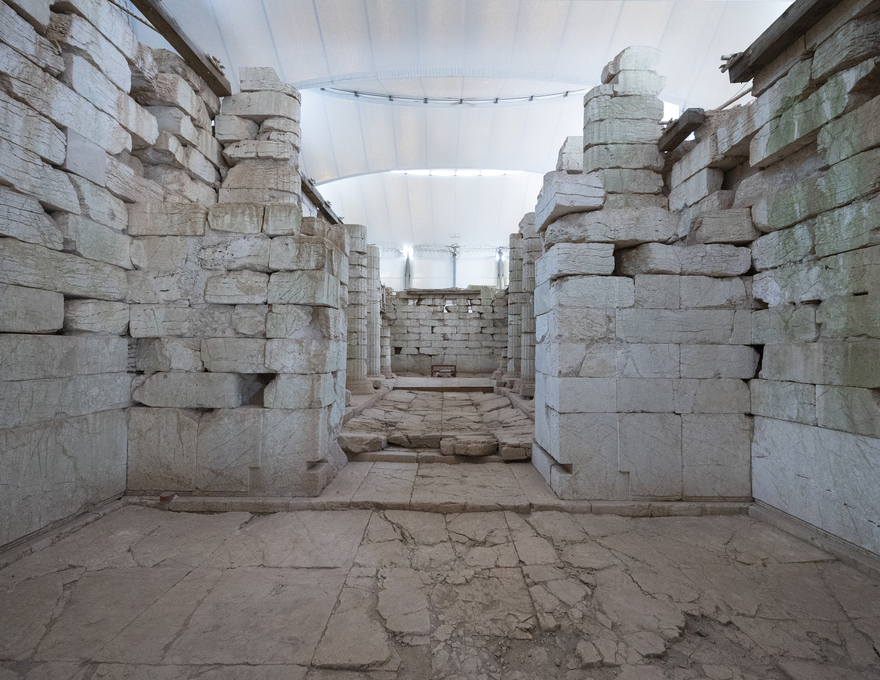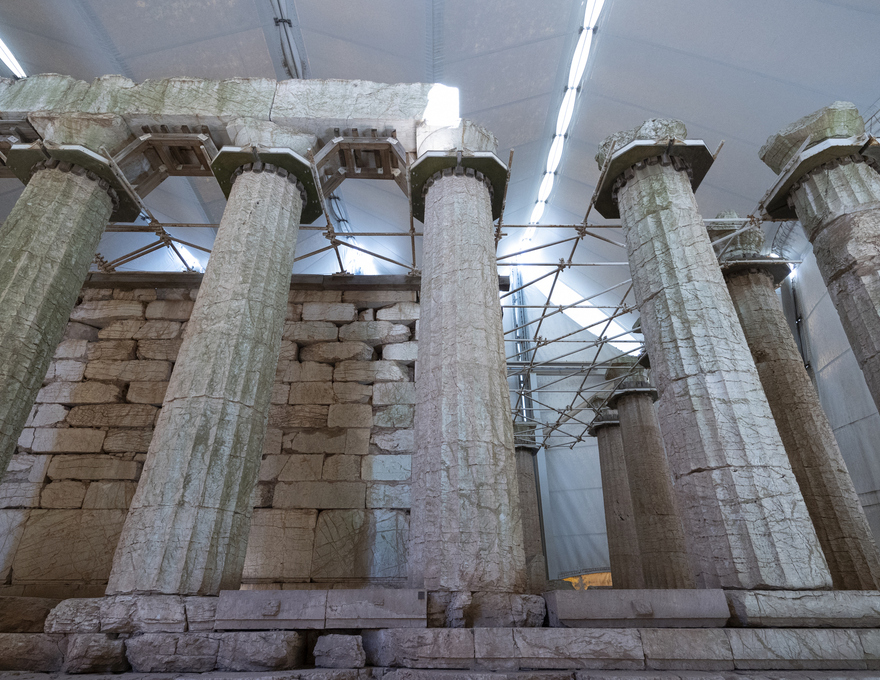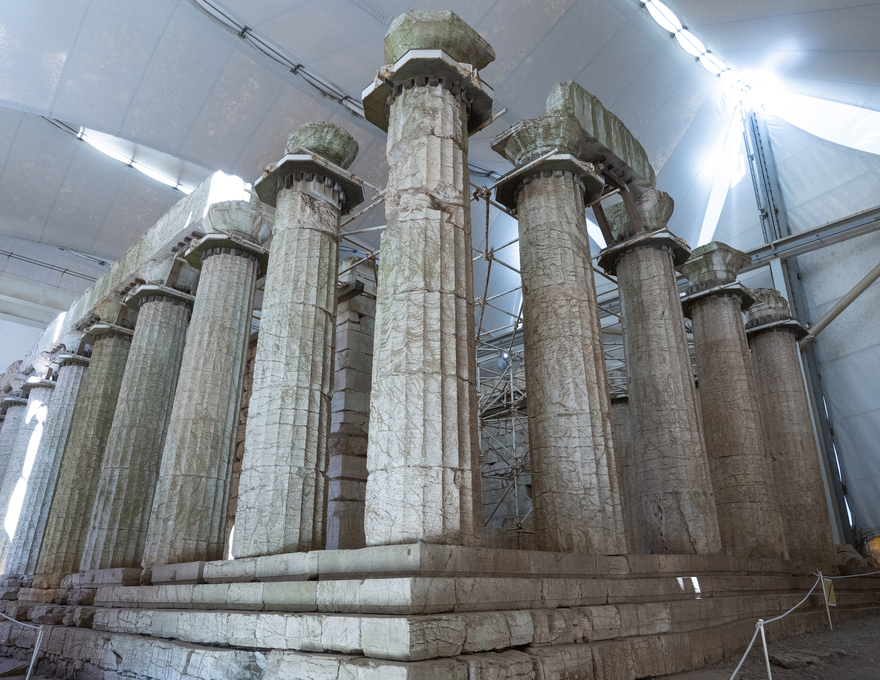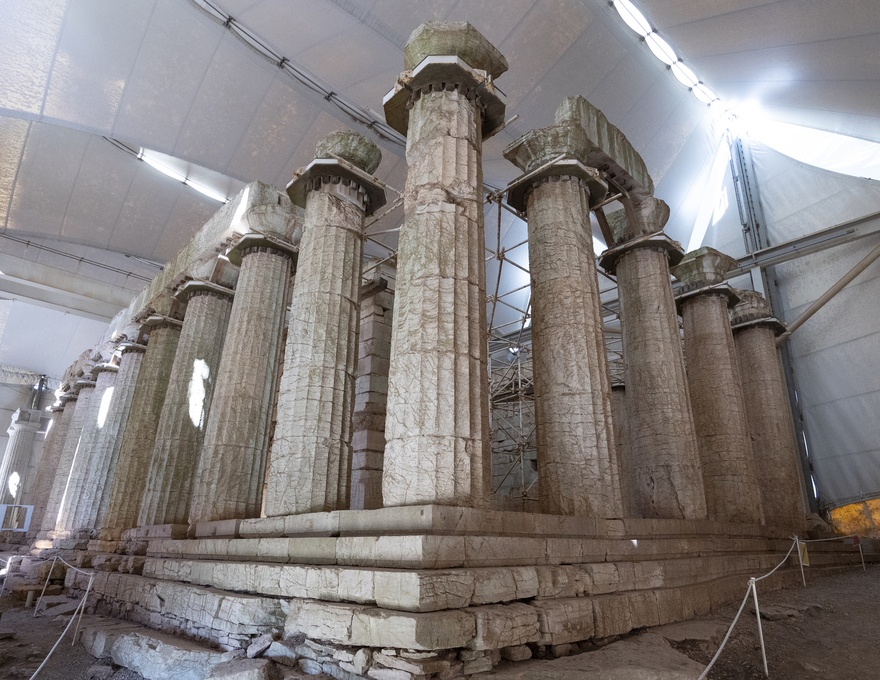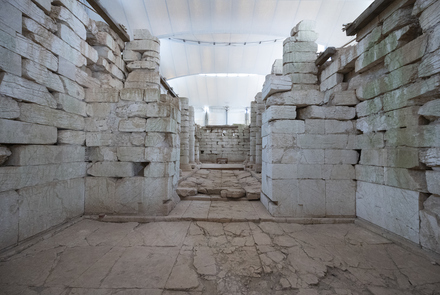Dedicated to the god Apollo Epicurius and built by the famous Greek architect Ictinus (or Iktinos), who achieved to combine archaic features with classical era forms, this temple is considered one of the most brilliant examples of ancient Greek architecture, declared a World Heritage Site by UNESCO in 1986.
Remarkable for its size and design innovation, founded in the rocky and inaccessible landscape of Bassae, the temple is arranged with a variety of originalities, well-constructed with light-colored local limestone and in some parts with marble, combining elements of the three architectural orders of antiquity, which what makes it unique. The temple is of Doric order, peripteros, two-columned in doorpost, with a pronaos, nave, sanctuary and rear building.
It is also defined by the 6 columns on its narrow side and 15 columns on the long side, giving it a more elongated form. It is distinct by its orientation from north to south, instead of the standard east meridian, possibly due to local religious cult traditions.
The temple’s main decorative feature, however, was the Ionic marble frieze, part of which is currently on display at the British Museum. The frieze, totaling a length of 31m, was made with marble slabs depicting the Amazon battle and the Centaur battle.
Description
Features
Location
For further information click here.
Video

